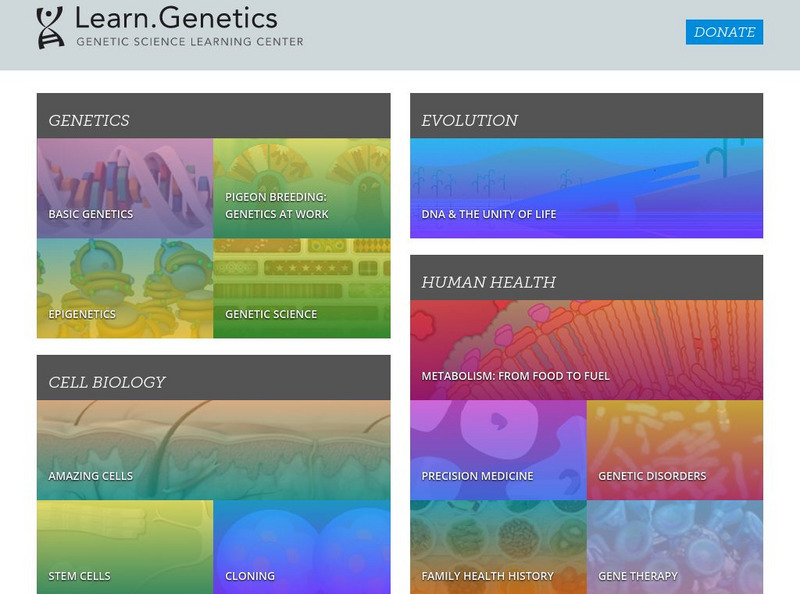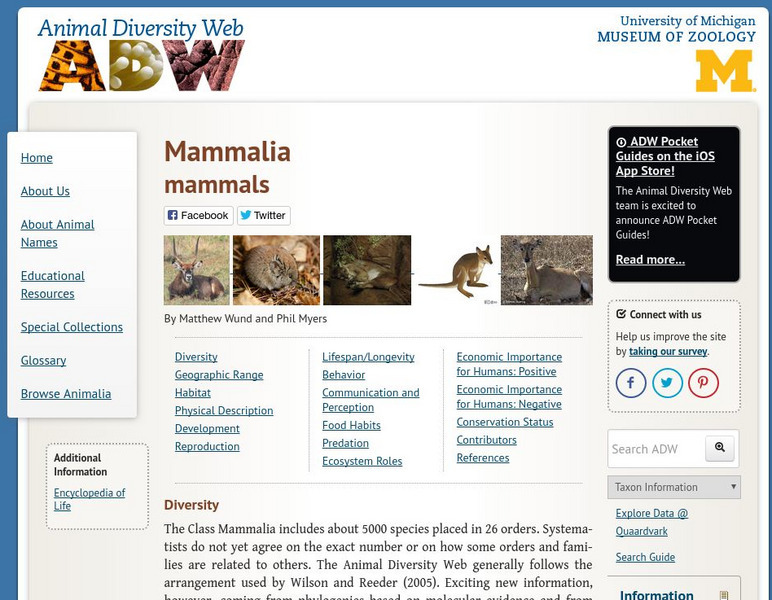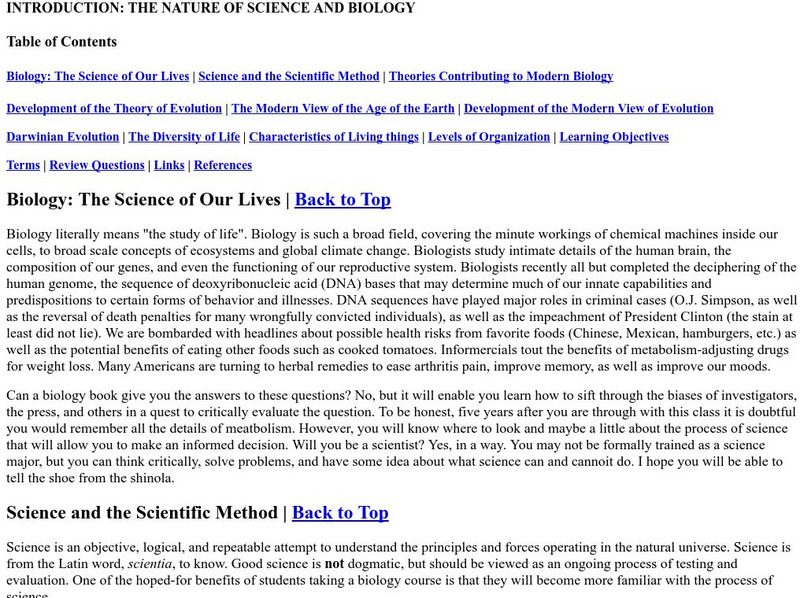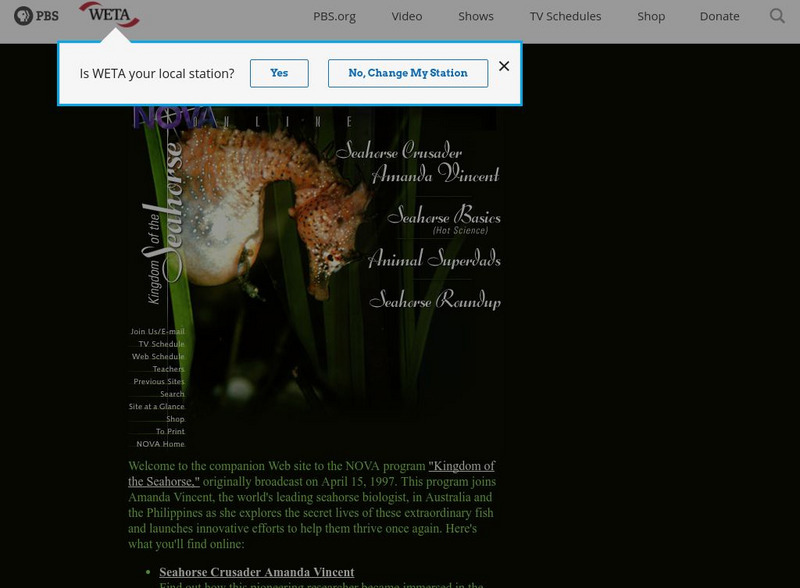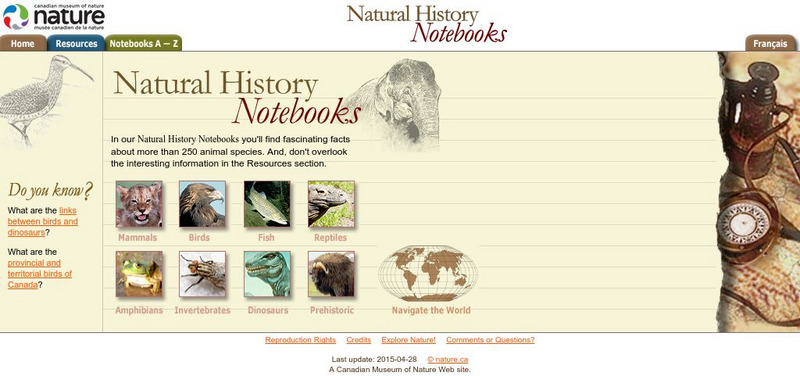University of Oxford (UK)
Oxford University Museum of Natural History: Seven Life Processes
Explore the seven life processes that describe whether an animal is alive or not. Each characteristic is defined with examples and pictures. Also included is a living animal quiz to test how much you have learned.
Physics Classroom
The Physics Classroom:characteristics of a Transmitted Pulse
A reference page that explores boundary behavior of waves with an animation and examples.
University of Utah
University of Utah: Genetic Science Learning Center: The Basics and Beyond
This website offers a clear definition of the science of Genetics, highlighting DNA and genes. There is a neat, easy-to-understand animated tour of the basics and an opportunity to go inside an animated cell. Student can build a DNA...
PBS
Pbs Learning Media: Landslide Animation
There has been 5,741 recorded rainfall triggered landslides worldwide between 2007-2013. Watch this animation by NASA that shows how rainfall over a slope causes ground saturation that triggers a landslide. Also, examine an annotated...
Earth Life
Wonderful World of Insects: An Introduction to the 32 Orders of Insects
A very thorough look at the world of insects. This site examines the 32 orders of insects and gives a complete explanation of the characteristics of each order. Text is supplemented with pictures.
BiologyWise
Biology Wise: Classification and Characteristics of Rotifers
Outlines the classification hierarchy of the phylum Rotifera and describes their characteristics and anatomy. Rotifera have survived for up to 80 million years and continue to play an important role in ecological systems.
Regents of the University of Michigan
Animal Diversity Web: Mammalia
For an overview of the anatomy and characteristics of mammals, visit this Animal Diversity Website. Discusses characteristics not found in other animals, the function of their hair, and their production of milk.
Estrella Mountain Community College
Online Biology Book: The Nature of Science and Biology
Use the scientific reasoning and critical thinking to take an in-depth look at the basics of biology.
Georgia Department of Education
Ga Virtual Learning: Ap Literature & Composition: The Journey Motif
This unit focuses on the "Journey Motif" using the following works: Heart of Darkness by Joseph Conrad, "Shooting An Elephant" by George Orwell, "Journey" by Edna St. Vincent Millay,"Sailing to Byzantium" by William Butler Yeats, "The...
Other
Absorb Learning: Properties of Waves
An interactive introduction to the properties of waves with descriptions, animations, and questions.
University of California
Regents of the University of California: Amphibia Web
AmphibiaWeb, a site inspired by global amphibian declines, is an online system that allows free access to information on amphibian biology and conservation. This site is filled with amphibian facts, a glossary of terms, species numbers,...
South Carolina Educational Television
Etv: Nasa Online: Matter and Molecules
An animation briefly explaining how vibrations create sound waves.
CK-12 Foundation
Ck 12: Life Science: Fish
[Free Registration/Login may be required to access all resource tools.] What exactly is a fish? You probably think the answer is obvious. You may say that a fish is an animal that swims in the ocean or a lake, using fins. But not all...
ArtsNow
Arts Now Learning: Classification of Animals: "Connect Your Animal Show" [Pdf]
Fifth graders learn about animal classification by reviewing the taxonomy system, then looking at pictures of animals as if they were scientists, acting out an animal's characteristics, then classifying their animal.
ClassFlow
Class Flow: Animal Classification
[Free Registration/Login Required] This interactive flipchart examines characteristics of each animal family (mammals, birds, reptiles, amphibians, and fish) It contains an assessment at the end which can be used with Activotes.
Geographypods
Geographypods: Hazards and Risk Management: Tropical Storms
This learning module looks at tropical storms. It explains the characteristics of a tropical storm, how they form, how they are predicted, and their frequency. Includes student tasks, graphs, videos, and an interactive animation of...
PBS
Pbs: Kingdom of the Seahorse
This site provides information about seahorses, including reproduction, behavior and ecology. Provides several links and an interactive menu.
Biology 4 kids
Biology4 Kids: Animal Systems
An overview of the structure and function of a complex, multicellular organism. This article discusses levels of organization and examples of systems.
University of Wisconsin
University of Wisconsin: Amphibian Embryology Tutorial
This amphibian embryology tutorial takes an in depth look at the question "Why study amphibians?". Through this tutorial students will develop a better understanding of vertebrate development.
Science Education Resource Center at Carleton College
Serc: Mn Step: Snails: Population Calculation in an Aquatic Environment
A 3-day field investigation where learners visit an aquatic area and collect snails. These are examined, the species identified, and the body parts and characteristics studied and recorded. Then the snails are returned to their homes....
Canadian Museum of Nature
Canadian Museum of Nature: Natural History Notebooks
This site from the Canadian Museum of Nature, a natural history museum, provides short information blurbs and fun facts on over 240 different common animals categorized by type (mammals, fish, reptiles, invertebrates, amphibians,...
Other
The Domains and Kingdoms of Life
This site is a description of the history behind the 5 Kingdom system suggested by Robert Whittaker. An extensive list of resources is included.
National Institute of Educational Technologies and Teacher Training (Spain)
Ministerio De Educacion: El Reino Animal
Learn about the animal kingdom including an in-depth look at body characteristics, reproduction, types of cells, ways they obtain food, and evolutionary relationships. Many illustrations and nine interactive activities are included.
PBS
Nh Pbs: Nature Works: Communication
This comprehensive site describes how communication is an adaptation that is important for survival.


